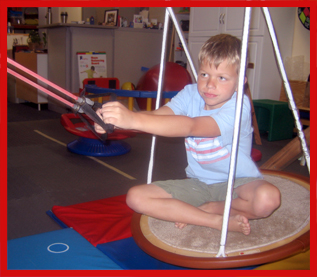Sensory Integration (S.I.) was termed in the 1960s by Dr. Jean Ayres. She combined her knowledge of neuroscience and Occupational Therapy to create theory, assessments, and treatment principles. S.I. is when the senses work together, to create a neurological process of organizing and interpreting, and directing the somatosensory functions from the environment. It locates, sorts, and orders sensations like a traffic policeman moves traffic. When there is S.I. dysfunction, a disorder in the brain function makes it difficult to integrate and organize the sensory input. Download our Sensory Profile Questionnaire Form.

S.I. develops in the course of ordinary childhood activities. Dr. Ayres taught that “Play Is the Work of Children.” For some, it does not develop as efficiently as it should. S.I. dysfunctions are a sort of traffic jam of the brain. Some bits of sensory information get tied up in traffic and parts of the brain do not get the messages to function properly. It is the foundation for later, more complex learning and behavior.
S.I. dysfunction was what Dr. Ayres noted when children had difficulty processing sensation from the environment of their bodies which can result in “sensory seeking” or “sensory avoiding.” Kids are out of sync, emotionally, socially, and behaviorally. There are problems in arousal, attention, and organization behavior.
The theory is used to explain the relationship between the brain and behavior and explains why individuals respond in a certain way to sensory input and how it affects behavior.
The five main senses are:
In addition, there are two other powerful senses: